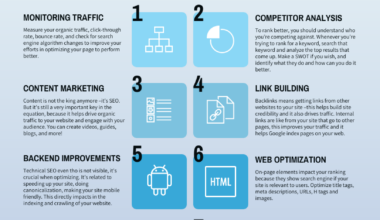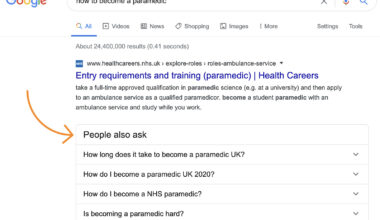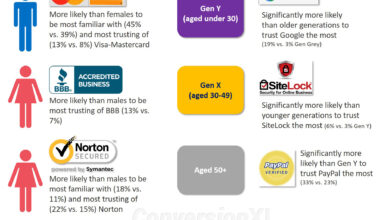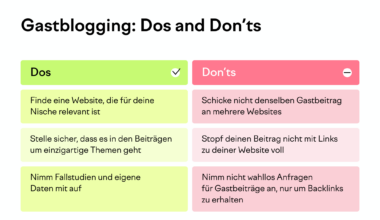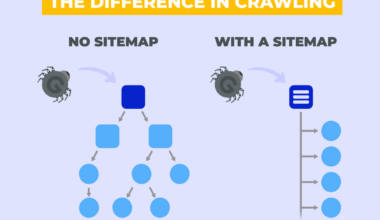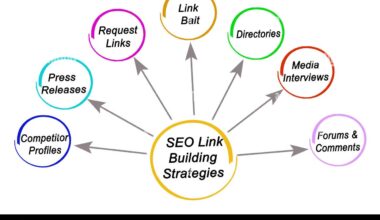Introduction to Google’s Knowledge Graph
Google’s Knowledge Graph is a powerful tool that provides users with instant answers to their search queries. It was launched in 2012 and has since then been helping users find the information they need quickly and efficiently. The Knowledge Graph is a database of over 500 billion entities and their relationships to each other. It contains data on a wide range of topics, including people, places, events, and things.
Google’s Knowledge Graph works by understanding the context of a user’s search and providing them with the most relevant information. For example, if a user searches for “Barack Obama,” the Knowledge Graph will display a brief biography of the former US President, along with related information such as his spouse, children, and political affiliations.
As a website owner or digital marketer, optimizing for Google’s Knowledge Graph can help you increase your online visibility and drive more traffic to your site. By appearing in the Knowledge Graph, you can gain more exposure and establish yourself as an authority in your industry.
However, optimizing for the Knowledge Graph requires a deep understanding of its algorithm and a strategic approach to content creation. In the following sections, we will explore the key elements of optimizing for the Knowledge Graph.
Understanding the Knowledge Graph Algorithm
To optimize for Google’s Knowledge Graph, it’s important to understand how the algorithm works. The Knowledge Graph uses a variety of signals to determine which information to display, including relevance, popularity, and trustworthiness. Here are some key factors to keep in mind when optimizing for the Knowledge Graph:
Entity Recognition
The Knowledge Graph is built around entities, which are the people, places, and things that users search for. To be recognized as an entity, your website needs to provide clear and structured information about the entities related to your industry. This includes using proper names, descriptions, and attributes that can be easily recognized by the algorithm.
Structured Data and Schema Markup
Structured data and schema markup play a crucial role in optimizing for the Knowledge Graph. By providing structured data on your website, you can help the algorithm understand the context of your content and its relationship to other entities. Schema markup is a standardized format for providing this structured data, and it can help your website appear in rich snippets and other Knowledge Graph features.
Authority and Reputation
The Knowledge Graph prioritizes information from authoritative and trustworthy sources. To improve your website’s authority and reputation, focus on creating high-quality content that provides value to your audience. Build backlinks from reputable websites, engage with your audience on social media, and establish yourself as a thought leader in your industry.
Consistency and Accuracy
To be recognized as an authoritative source, your website needs to provide consistent and accurate information. This includes using the same naming conventions, descriptions, and attributes across your website and other online platforms. Make sure to update your information regularly and correct any inaccuracies as soon as possible.
By understanding the Knowledge Graph algorithm and optimizing your website accordingly, you can increase your chances of appearing in the Knowledge Graph and driving more traffic to your site. In the next section, we will explore how to create high-quality content that is optimized for the Knowledge Graph.
Structured Data and Schema Markup
Structured data and schema markup are essential elements of optimizing for the Knowledge Graph. By providing structured data, you can help the algorithm understand the context of your content and its relationship to other entities. Schema markup is a standardized format for providing structured data, and it can help your website appear in rich snippets and other Knowledge Graph features.
Here are some tips for using structured data and schema markup to optimize for the Knowledge Graph:
Use Schema Markup to Define Your Entity
Schema markup allows you to define your entity in a standardized format that the Knowledge Graph algorithm can easily understand. This includes providing information such as the name, description, and image of your entity. By using schema markup, you can help the algorithm recognize your entity and display it in relevant search results.
Include Relevant Attributes in Your Schema Markup
In addition to defining your entity, schema markup also allows you to add relevant attributes that provide additional context about your entity. This includes attributes such as location, opening hours, and contact information. By including these attributes in your schema markup, you can help the algorithm understand the full context of your entity and display it in relevant search results.
Test Your Schema Markup for Errors
Before implementing your schema markup, it’s important to test it for errors using Google’s Structured Data Testing Tool. This tool will help you identify any errors or warnings in your schema markup, which can impact your website’s appearance in the Knowledge Graph. Make sure to correct any errors or warnings before implementing your schema markup.
Update Your Schema Markup Regularly
To ensure that your website’s schema markup is up-to-date and accurate, it’s important to update it regularly. This includes adding new attributes as your entity evolves and correcting any errors or inaccuracies as they arise. By keeping your schema markup up-to-date, you can improve your website’s chances of appearing in the Knowledge Graph.
In conclusion, structured data and schema markup are important elements of optimizing for the Knowledge Graph. By using schema markup to define your entity, including relevant attributes, testing for errors, and updating regularly, you can increase your website’s visibility and drive more traffic to your site. In the next section, we will explore how to create high-quality content that is optimized for the Knowledge Graph.
Creating High-Quality Content
Creating high-quality content is crucial for optimizing your website for Google’s Knowledge Graph. The algorithm prioritizes content that is informative, engaging, and provides value to the user. Here are some tips for creating high-quality content that is optimized for the Knowledge Graph:
Provide Accurate and Up-to-Date Information
To be recognized as an authoritative source, your website must provide accurate and up-to-date information. This means that you need to fact-check your content and ensure that it is free from errors and inaccuracies. In addition, you should update your content regularly to reflect any changes in your industry or field.
Use Clear and Concise Language
The Knowledge Graph algorithm values content that is easy to read and understand. Therefore, it’s important to use clear and concise language that is accessible to a wide audience. Avoid using jargon or technical terms that may be difficult for users to understand.
Provide In-Depth Information
The Knowledge Graph algorithm rewards content that provides in-depth information on a particular topic. Therefore, it’s important to provide comprehensive information that covers all aspects of a particular topic. This can include providing detailed explanations, examples, and case studies.
Optimize for Featured Snippets
Featured snippets are a type of Knowledge Graph feature that displays a brief summary of a website’s content at the top of the search results page. To optimize your content for featured snippets, you should provide clear and concise answers to frequently asked questions in your industry. Use bullet points or numbered lists to make your content more scannable and accessible.
Include Multimedia Content
Multimedia content such as images, videos, and infographics can make your content more engaging and informative. Use high-quality images and videos that are relevant to your content and provide additional context. Infographics can be used to communicate complex information in a visually appealing and accessible way.
Provide Original Content
The Knowledge Graph algorithm values original content that provides a unique perspective on a particular topic. Therefore, it’s important to provide content that is not available elsewhere online. Avoid copying or duplicating content from other sources, as this can harm your website’s reputation and authority.
By creating high-quality content that is optimized for the Knowledge Graph, you can increase your website’s visibility and establish yourself as an authoritative source in your industry. However, it’s important to remember that creating high-quality content is an ongoing process that requires constant attention and improvement. Regularly reviewing and updating your content can help you stay ahead of the competition and improve your chances of
Leveraging Social Media
Social media can be a powerful tool for optimizing your website for Google’s Knowledge Graph. By leveraging social media, you can increase your website’s visibility, build your authority and reputation, and drive more traffic to your site. Here are some tips for leveraging social media to optimize for the Knowledge Graph:
Create Social Media Profiles
To leverage social media, you must first create social media profiles for your website or business. This includes creating profiles on popular platforms such as Facebook, Twitter, LinkedIn, and Instagram. Make sure to include accurate and up-to-date information on your profiles, including your website URL, contact information, and a brief description of your business.
Share Your Content on Social Media
Once you have created your social media profiles, you can start sharing your content on these platforms. This includes sharing blog posts, infographics, videos, and other types of content that are relevant to your audience. By sharing your content on social media, you can increase your website’s visibility and drive more traffic to your site.
Engage with Your Audience
Engaging with your audience on social media can help you build your authority and reputation. This includes responding to comments, answering questions, and sharing relevant content from other sources. By engaging with your audience, you can establish yourself as a thought leader in your industry and increase your chances of appearing in the Knowledge Graph.
Build Backlinks from Social Media
Backlinks from social media can help improve your website’s authority and reputation. This includes links to your website from social media profiles, posts, and comments. Make sure to include links to your website in your social media profiles and posts, and encourage your followers to share your content with their own networks.
Monitor Your Social Media Metrics
Monitoring your social media metrics can help you understand how your content is performing on these platforms. This includes metrics such as likes, shares, comments, and engagement rates. By analyzing these metrics, you can identify which types of content are resonating with your audience and adjust your social media strategy accordingly.
By leveraging social media, you can increase your website’s visibility and build your authority and reputation, which can improve your chances of appearing in the Knowledge Graph. However, it’s important to remember that social media is just one part of a comprehensive optimization strategy. By combining social media with other tactics such as structured data, high-quality content, and backlink building, you can improve your website’s chances of appearing in the Knowledge Graph and driving more traffic to your site.
Final Thought on Optimizing for Google’s Knowledge Graph
Optimizing your website for Google’s Knowledge Graph requires a strategic approach that focuses on providing high-quality content, using structured data and schema markup, and leveraging social media. By understanding the Knowledge Graph algorithm and following best practices for optimization, you can increase your website’s visibility and establish yourself as an authoritative source in your industry.
However, it’s important to remember that optimizing for the Knowledge Graph is an ongoing process that requires constant attention and improvement. Regularly reviewing and updating your website’s content, schema markup, and social media strategy can help you stay ahead of the competition and improve your chances of appearing in the Knowledge Graph.
In addition, it’s important to keep in mind that appearing in the Knowledge Graph is not the only goal of optimization. While the Knowledge Graph can provide valuable exposure and traffic to your site, it’s also important to focus on other aspects of SEO such as backlink building, keyword research, and on-page optimization.
In conclusion, optimizing for Google’s Knowledge Graph can be a valuable strategy for improving your website’s visibility and driving more traffic to your site. By following best practices for optimization and constantly refining your approach, you can stay ahead of the competition and establish yourself as a thought leader in your industry.














